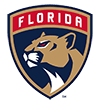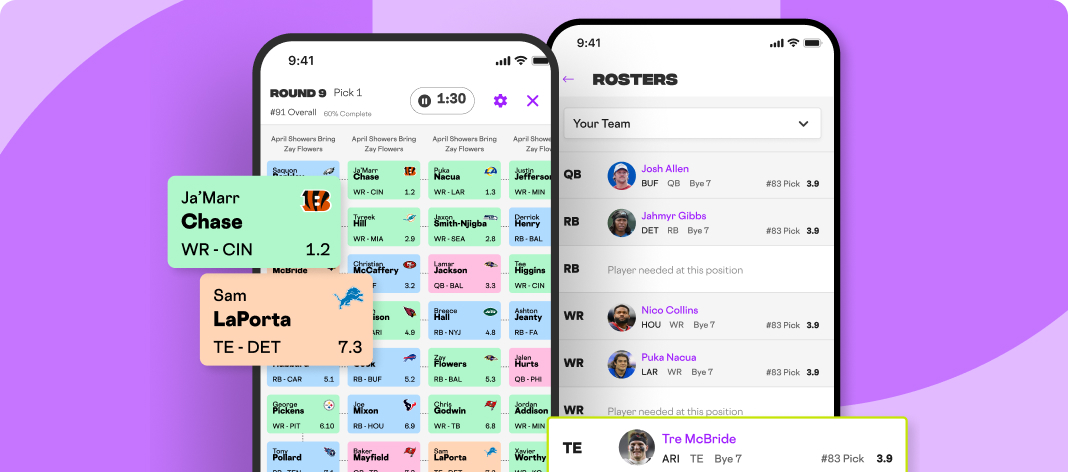The conference may still be seeking its first national championship since 2000, but it is shaping up to be a banner year for the Big Ten. The league landed eight teams in last season's NCAA Tournament, sending four to the Sweet 16 for the first time since 2013 after all eight teams advanced to the second round. This season's version of the conference looks even stronger with a couple of national title contenders at betting apps and a litany of squads that could find themselves ranked at some point throughout the year.
As the season approaches, RotoWire.com dug into the age of every roster in the Big Ten to see what insight we could garner. We utilized the official Big Ten team websites to gather the class (from freshman to graduate) of all players on active rosters as of September 25th. After using the average age for a player in that class, we were able to rank the oldest to youngest Big Ten teams for the 2025-26 season.
Note: This is not an exact average age for each roster due to limited access to player ages (Iowa is the only school in the conference with birthdates listed for every member of its roster). This is used to be an estimate and subject to change based on roster changes.
Top 2025 Big Ten Basketball Teams by Average Player Age
Rank | Team | # of Players | Average Age |
1 |
| 15 | 20.40 |
2 |
| 16 | 20.19 |
3 |
| 15 | 20.07 |
T4 |
| 15 | 20.00 |
T4 |
| 17 | 20.00 |
T4 |
| 16 | 20.00 |
7 |
| 14 | 19.86 |
8 |
| 15 | 19.80 |
T9 |
| 16 | 19.75 |
T9 |
| 16 | 19.75 |
11 |
| 14 | 19.64 |
12 |
| 16 | 19.63 |
13 |
| 15 | 19.60 |
14 |
| 15 | 19.47 |
15 |
| 15 | 19.40 |
16 |
| 14 | 19.36 |
17 |
| 15 | 19.00 |
18 |
| 13 | 18.85 |
Analyzing UCLA's Veteran-Laden Roster
Meet the most veteran heavy high major conference in the country. Six Big Ten teams feature rosters with an average age of 20 or above, compared to five in the SEC, two in the Big 12 and ACC and one in the Big East.
UCLA leads the league at an average age of 20.40, the third highest mark of any high major team behind only Texas A&M and UCF (both at 20.47). The Bruins roster includes ten graduates, seniors or juniors, and is tied for a league low with just three freshmen, two of whom redshirted last season. Head coach Mick Cronin retained three of his four leading scorers from last year in seniors Tyler Bilodeau (13.5 points per game) and Skyy Clark (8.5 ppg) and junior Eric Dailey (11.4 ppg) while adding a bona fide star through the transfer portal in Mountain West Player of the Year Donovan Dent (New Mexico). That core, along with a stable of intriguing role players, should keep the squad near the top of the conference as UCLA sports the third best odds to win the Big Ten title at +700 per ESPN Bet.
USC's Strategic Use of Graduate Players
The Bruins crosstown rival USC is also leaning heavily into experience this season. The Trojans are set to dress a conference leading five graduate students, including 25-year-old Auburn transfer Chad Baker-Mazara, as well as two other seniors. USC signed two of the five top 50 freshmen joining the Big Ten this year, however 247Sports Composite number seven overall recruit Alijah Arenas might not be able to suit up at all this season after suffering a knee injury in July, meaning the Trojans will look to Baker-Mazara, Terrance Williams and Maryland transfer Rodney Rice for their primary scoring punch while he recovers.
Minnesota's Upperclassmen-Heavy Roster
Seniors accounted for 79.3 percent of Minnesota's minutes last year as the Golden Gophers boasted the fourth most experienced roster in the nation per KenPom.com. That roster failed to coalesce as intended, leading to coach Ben Johnson's firing after four seasons in Minneapolis, but new boss Niko Medved took a similar approach to team building this offseason. This year's squad will not be quite as senior laden, but only sophomore Isaac Asuma and redshirt freshman Grayson Grove return from last year as Medved added ten upperclassmen in his makeover. 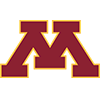 Minnesota is still expected to be among the worst teams in the league again though as ESPN Bet puts them at +12500 to win the conference, ahead of only Northwestern and Penn State.
Minnesota is still expected to be among the worst teams in the league again though as ESPN Bet puts them at +12500 to win the conference, ahead of only Northwestern and Penn State.
How Illinois Rebuilt with International Talent
 Illinois fielded the least experienced team in the Big Ten in 2024-25, with just one senior on the squad and freshmen Kasparas Jakucionis and Will Riley leading the team in points. Jakucionis and Riley were both selected in the 1st round of the NBA Draft, while three other members of the rotation transferred, leaving the roster at a bit of crossroads. Brad Underwood responded by embracing international flavor, importing David Mirkovic from Montenegro and Mihailo Petrovic from Serbia while luring Andrej Stojakovic (Cal) and Zvonimir Ivisic (Arkansas) out of the portal, giving the Fighting Illini five players with Balkan heritage on the roster with Zvonimir's brother Tomislav returning. The result is an older team as Mirkovic is the only one of those additions below junior age and veteran rotation players Kylan Boswell, Ben Humrichous and Jake Davis are back as well along with Ty Rodgers coming off a redshirt season.
Illinois fielded the least experienced team in the Big Ten in 2024-25, with just one senior on the squad and freshmen Kasparas Jakucionis and Will Riley leading the team in points. Jakucionis and Riley were both selected in the 1st round of the NBA Draft, while three other members of the rotation transferred, leaving the roster at a bit of crossroads. Brad Underwood responded by embracing international flavor, importing David Mirkovic from Montenegro and Mihailo Petrovic from Serbia while luring Andrej Stojakovic (Cal) and Zvonimir Ivisic (Arkansas) out of the portal, giving the Fighting Illini five players with Balkan heritage on the roster with Zvonimir's brother Tomislav returning. The result is an older team as Mirkovic is the only one of those additions below junior age and veteran rotation players Kylan Boswell, Ben Humrichous and Jake Davis are back as well along with Ty Rodgers coming off a redshirt season.
Michigan, Purdue, OSU Middle Of Pack
The top two contenders in the Big Ten, Michigan and Purdue both come in with a middle of the road average age of 19.75, but the two rosters were assembled in very different manners. Michigan made major investments in the portal after losing its top three scorers, landing the nation's number two transfer class according to 247Sports. Two-time AAC Defensive Player of the Year Yaxel Lendeborg (UAB) headlines the class, but Aday Mara (UCLA), Morez Johnson (Illinois) and Elliot Cadeau (UNC) were all considered top 100 transfers too. They will join forces with returnees Roddy Gayle Jr., Nimari Burnett, Will Tschetter and L.J. Cason plus top 100 recruits Trey McKenney and Winters Grady to create a deep rotation that sits at +375 to win the conference and +1600 to win the national championship per ESPN Bet.
Long known for strong internal development,  Purdue claims the title of continuity kings at the high major level this season. Per Barttorvik.com the Boilermakers return 69.7 percent of their minutes from last year, the eighth highest number nationally and 13.5 percentage points more than the next closest high major Connecticut. Big Ten Player of the Year Braden Smith is the only First Team All-American coming back to college basketball and the National Player of the Year frontrunner is flanked by another First Team All-Big Ten performer in Trey Kaufman-Renn while Smith's backcourt partner Fletcher Loyer also returns for a fourth season as a starter. Those three form an electric senior trio that will be supplemented by transfers Oscar Cluff (South Dakota State) and Liam Murphy (North Florida), Israeli import Omer Mayer and a host of key role player holdovers. Not only does this group have Purdue positioned as the Big Ten favorite at +155 according to ESPN Bet, but the Boilermakers stand as the consensus top national championship choice across all major betting apps.
Purdue claims the title of continuity kings at the high major level this season. Per Barttorvik.com the Boilermakers return 69.7 percent of their minutes from last year, the eighth highest number nationally and 13.5 percentage points more than the next closest high major Connecticut. Big Ten Player of the Year Braden Smith is the only First Team All-American coming back to college basketball and the National Player of the Year frontrunner is flanked by another First Team All-Big Ten performer in Trey Kaufman-Renn while Smith's backcourt partner Fletcher Loyer also returns for a fourth season as a starter. Those three form an electric senior trio that will be supplemented by transfers Oscar Cluff (South Dakota State) and Liam Murphy (North Florida), Israeli import Omer Mayer and a host of key role player holdovers. Not only does this group have Purdue positioned as the Big Ten favorite at +155 according to ESPN Bet, but the Boilermakers stand as the consensus top national championship choice across all major betting apps.
Although Purdue is the only team in the conference to eclipse a 50 percent returning minutes rate, Ohio State owns the second most roster continuity in the Big Ten. Three players who averaged at least 13 points per game last season, senior Bruce Thornton, junior Devin Royal and sophomore John Mobley Jr., are back in Columbus, giving the Buckeyes a strong core to build around. The team disappointingly missed the NCAA Tournament last year after going 4-7 in February and March, leading to an exodus of the rest of the rotation as Jake Diebler looked to find the right pieces to put around his stars. Ohio State added three senior/graduate transfers to the frontcourt in Christoph Tilly (Santa Clara), Josh Ojianwuna (Baylor) and Brandon Noel (Wright State) plus signed redshirt sophomore guard Gabe Cupps (Indiana) in an effort to go dancing for the first time since 2022.
Best Of The Rest
Ben McCollum will attempt to replicate the success he had in his first season coaching at the Division 1 level at Drake last year 114 miles down the road at Iowa. McCollum took a roster with almost no D1 experience to a 31-4 record and the second round of the NCAA Tournament after convincing four of his players to follow him from Northwest Missouri State. Point guard Bennett Stirtz proved to be an immediate sensation after moving up with McCollum, averaging an NCAA high 39.4 minutes per game and leading the nation in win shares too. Stirtz and four other Drake players will join him in Iowa City although the rest of the roster is largely unknown outside of transfers Brendan Hausen (Kansas State) and Alvaro Folgueiras (Robert Morris), suggesting the Hawkeyes fortunes are tied to how special Stirtz can be.
A pair of bottom feeders round out the two youngest rosters in the Big Ten.  Rutgers failed to capitalize on a team that featured two top five picks in Dylan Harper and Ace Bailey last season. Even without building around stud freshmen, this year's squad comes in even younger as five of the other top six rotation players, four of whom were upperclassmen, departed the program along with Harper and Bailey. This left the Scarlet Knights with just one senior on the roster and forced them to bring in seven true freshmen, none of whom ranked in the composite top 100. As a result, Rutgers owns the fourth worst conference title odds at +10000 at ESPN Bet, while analytics models think even less of the team.
Rutgers failed to capitalize on a team that featured two top five picks in Dylan Harper and Ace Bailey last season. Even without building around stud freshmen, this year's squad comes in even younger as five of the other top six rotation players, four of whom were upperclassmen, departed the program along with Harper and Bailey. This left the Scarlet Knights with just one senior on the roster and forced them to bring in seven true freshmen, none of whom ranked in the composite top 100. As a result, Rutgers owns the fourth worst conference title odds at +10000 at ESPN Bet, while analytics models think even less of the team.
Coming in with an average age of 18.85, Penn State not only possesses the youngest roster in the conference, but the youngest roster among all high major schools based on our research. Colorado (18.93 average age) is the only other team in a top five league below an average of 19, and like the Buffaloes the Nittany Lions project as one of the worst high majors heading into the season. Penn State's single senior ties Rutgers for a league low and the roster also features a conference high eight freshmen in comparison to just three upperclassmen. With little proven talent on the team, it is no wonder the Nittany Lions bring up the rear in ESPN Bet's Big Ten title odds at +20000.





 UCLA
UCLA USC
USC Oregon
Oregon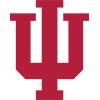 Indiana
Indiana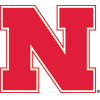 Nebraska
Nebraska Michigan State
Michigan State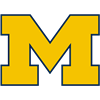 Michigan
Michigan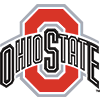 Ohio State
Ohio State Maryland
Maryland Wisconsin
Wisconsin Washington
Washington Northwestern
Northwestern Iowa
Iowa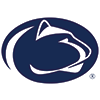 Penn State
Penn State











